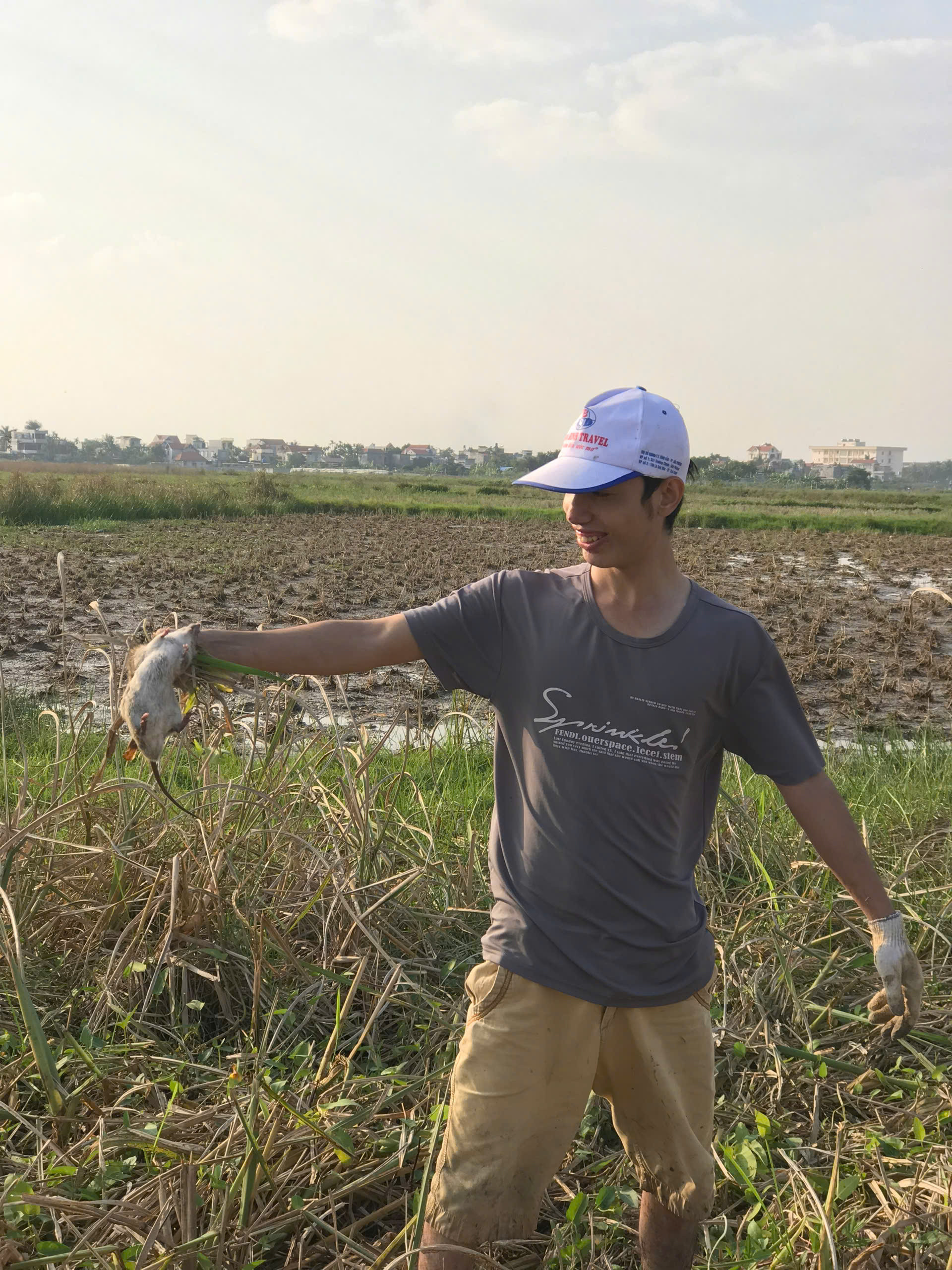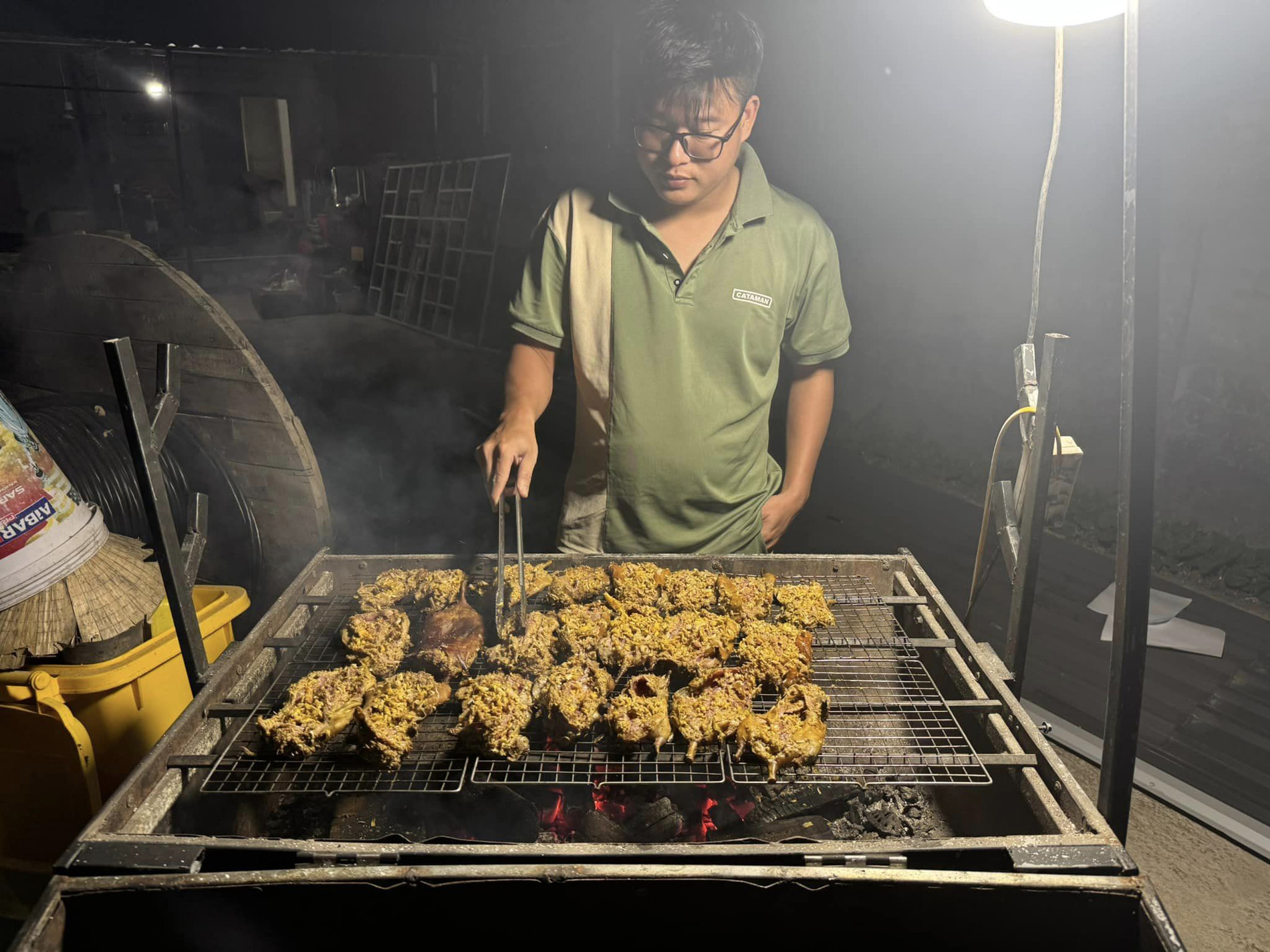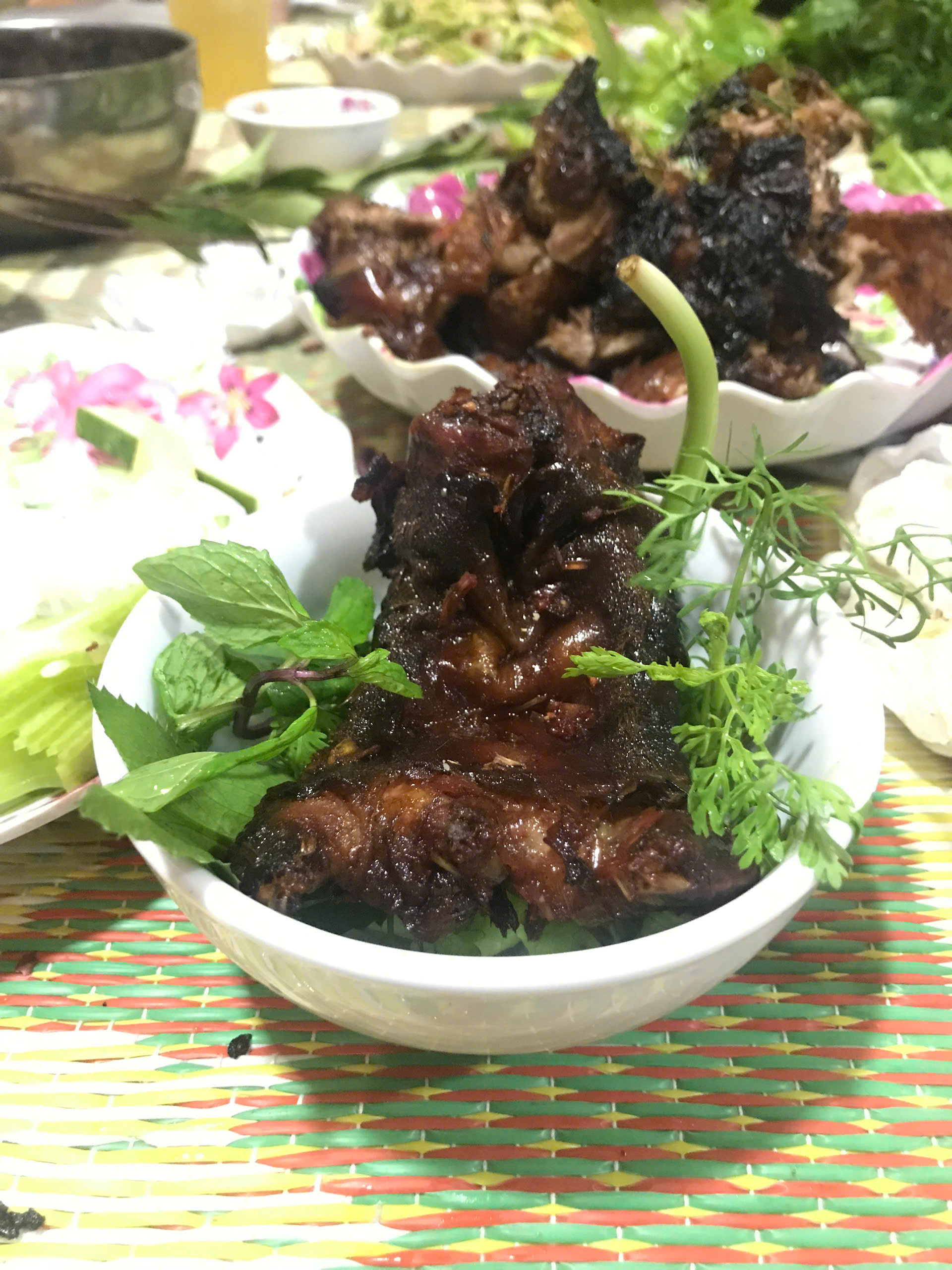Considered a local specialty in some districts of Hai Phong, including Kien Thuy, Vinh Bao, and Tien Lang, field mouse meat is as pricey as beef and can be prepared in a variety of dishes such as stir-fried, sticky rice, mock civet, and grilled.
 |
 |
Field mouse meat is a familiar ingredient in the cuisine of several districts in Hai Phong and has gradually become a popular delicacy, drawing in visitors from nearby areas to try it.
According to locals, the peak season for field mouse meat is from September to early November on the lunar calendar. At this time, mice forage in ripe rice fields, eating grain and storing fat to prepare for the cold winter, resulting in particularly plump mice.
Locals take advantage of this period to catch mice, which helps protect their crops and provides additional income and ingredients for cooking.

Pham Quyen, a resident of Tien Lang, explained that once the mice are caught, they are dipped in hot water to remove fur and then lightly singed over fire. This method gives the mice a golden-brown skin, which adds an appealing color and aroma when cooked.
After singeing, the mice are gutted, cleaned, and rinsed in saltwater. Some people also keep the liver, considered fatty and flavorful.
To neutralize any strong odor, the meat is soaked in ginger water or lemon juice for 10-15 minutes before cooking.
Field mouse meat can be used in many dishes, but the most common preparation is boiled mouse, which is simple and retains the original flavor.
 |
 |
After thorough cleaning, the meat is tightly rolled and boiled for 7-10 minutes in water with ginger, salt, and seasonings like onion, fish sauce, and pepper to enhance flavor and aroma.
Traditionally, after boiling, the meat undergoes additional steps for a more appealing dish, such as air-drying overnight or pressing it with la re (wild ginger leaves commonly found in rural areas, resembling galangal).
“In my hometown, after boiling, the meat is drained and placed on banana leaves with a layer of la re. Then, it’s wrapped tightly and weighted down with a stone mortar or other heavy object,” Quyen said.
According to Quyen, pressing the meat helps it firm up, giving it a chewier texture and enhancing the unique aroma of la re.
When served, the layers of leaves are unwrapped, and the meat is chopped into bite-sized pieces, arranged on a plate, and garnished with finely sliced lime leaves.
Boiled field mouse meat pairs well with ginger fish sauce, spicy chili, or simply with lime-salt chili sauce.
 |
 |
During the ripe rice season in Kien Thuy, Vinh Bao, and Tien Lang, visitors might find pre-processed field mice for sale in local markets at prices ranging from VND 220,000 to 250,000 per kilogram.
Locals often season and prepare the meat in various dishes, such as grilling, roasting in a clay pot, or stir-frying. For a more elaborate meal, the meat is used in sticky rice dishes or mock civet, adding a distinctive touch to regional cuisine.
“At first glance, many visitors might feel uneasy, but those who try field mouse meat often find it tastier than chicken,” Quyen remarked.
However, since field mice live in the wild, they can carry diseases and parasites. Although the meat is thoroughly cleaned and cooked, diners are advised to exercise caution.
Thao Trinh